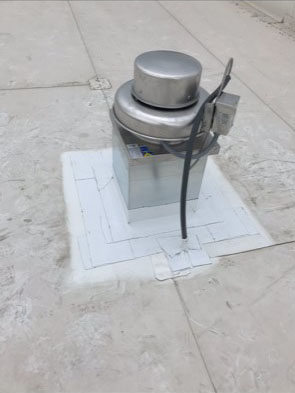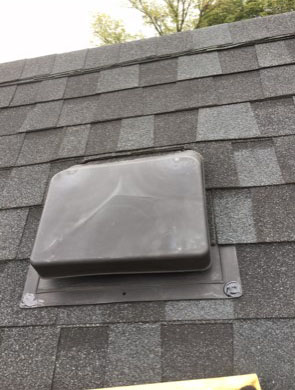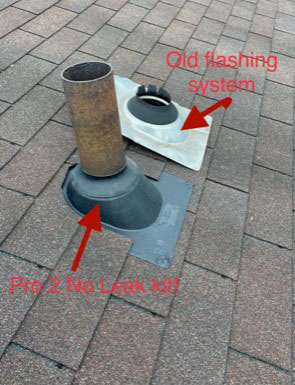It’s not unusual to inspect a roof for leaks and find it to be completely sound everywhere, except for the vents. Venting is absolutely necessary, and vent installation requires some type of hole to be made on the roof’s surface to attach it. What many of our customers (and even some general contractors) don’t understand is that these vents will require periodic maintenance over time in order to keep them working and to prevent leaks into your home or building.
Types of roof vents by function:
- Roof attic vents are used to ventilate the attic space of a home. They allow hot air to escape from the attic, which helps to keep the home cool in the summer and allow trapped heat under the roof to exit the attic in the winter to prevent ice damming from forming. If you have large icicles hanging from your gutters in the winter, then know this is caused by ice damming from poor attic ventilation.
- A plumbing vent is a metal or plastic pipe protruding from the roof’s surface. It allows gases and odors from the sewer system to safely escape, and it allows fresh air to be drawn into the plumbing waste and venting system, which helps to keep the drain pipes flowing properly. Vent pipes use special flashing and rubberized boot-like seals that will deteriorate over time and cause roof leaks.



There are two main types of roof attic vents:
- Static vents: These vents are made of metal or plastic and have a louvered cover that allows air to flow out of the attic.
- Power vents: These vents are powered by a fan that helps to circulate air through the attic.
Static attic vents are the most common type of roof vent. They are relatively inexpensive and easy to install. Power vents are more expensive than static vents, but they are more effective at ventilating the attic.
Roof vents should be installed on the ridge of the roof, near the top of the attic space. They should be placed close together to create a continuous flow of air through the attic.
When we install new roof vents, we first have to remove the old roof vent. We would have to remove the existing shingles around the roof vent before we can take it off the roof. After the existing roof vent is removed, we can install a new roof vent that would be flashed and then re-shingled. Typically, we use existing shingles. If not, we would use new shingles that would match.
